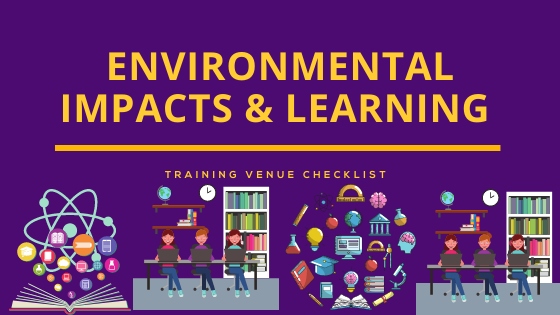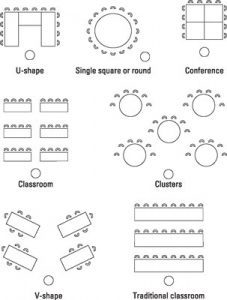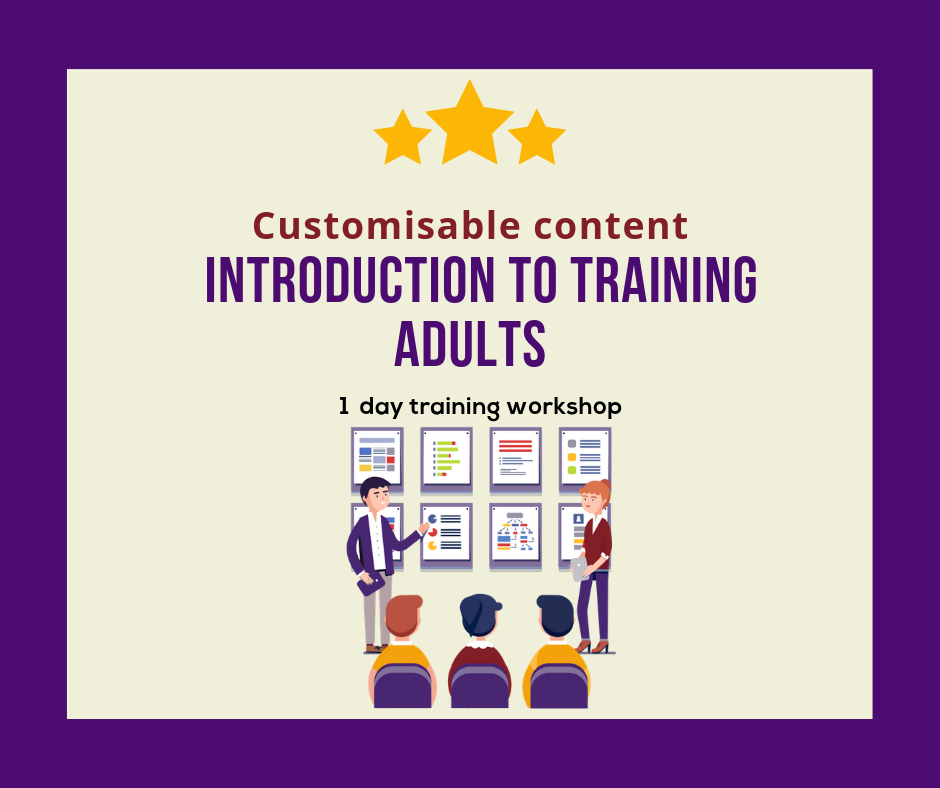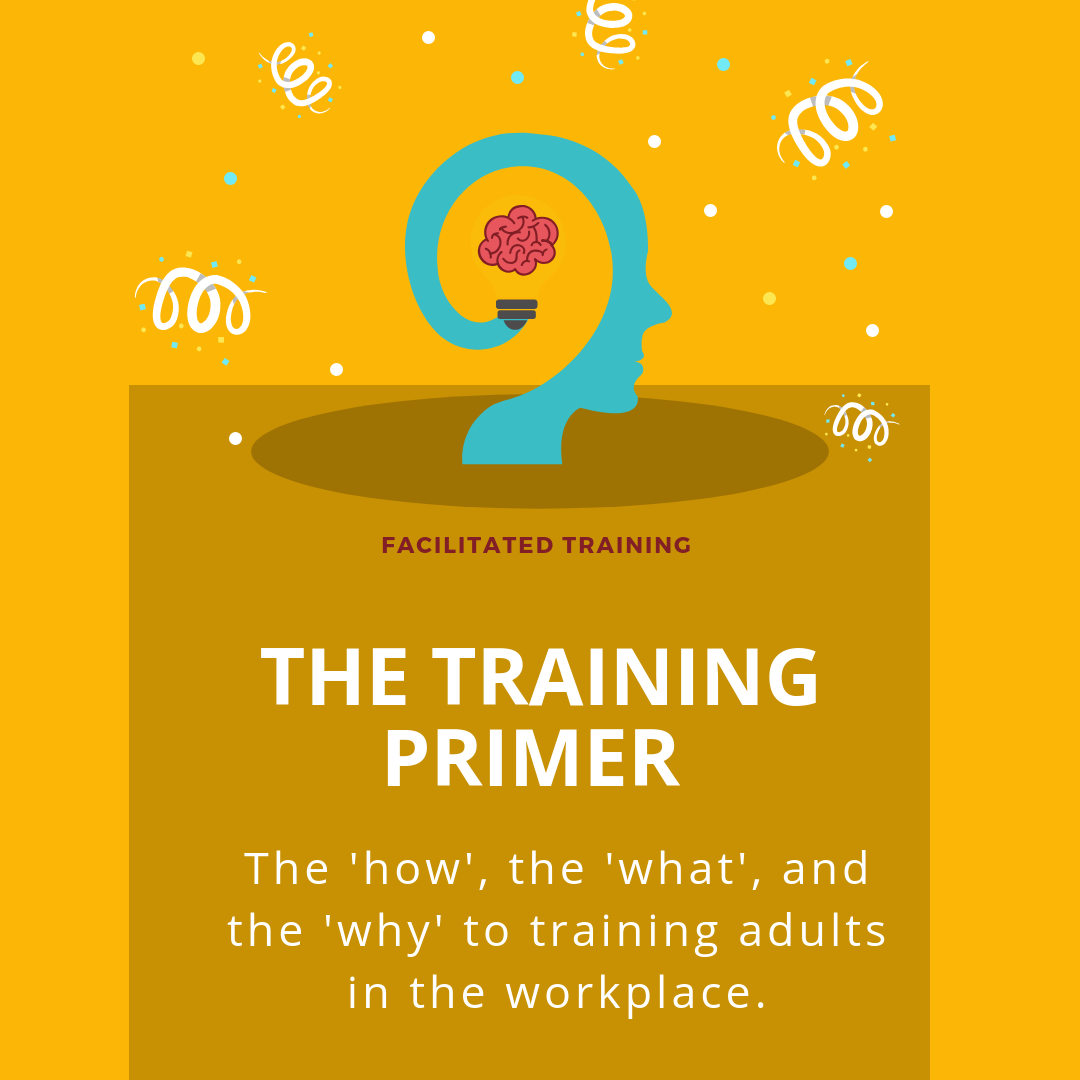
There have been numerous studies that have linked the impact of the physical environment to learning outcomes.
It stands to reason, that these impacts adult learners and workplace training. Image for a moment that you have invested time and effort into creating a targeted workshop. Participants have been notified. Time away from the workplace has been approved. Training materials have been printed. You have reviewed the training materials and have confidence in your ability to deliver an engaging workshop. The training room has been booked by a third party. They are not familiar with the training content, nor are they familiar with the specific needs of adult learners. A room is a room, right?
No it’s not.
Imagine turning up for work to find that your tools had been taken away. Imagine what would happen if you turned up at work and the key tools you need to do your job had been taken away without warning. No computer, no desk, no tools. Access to the internet is the least of your worries if you don’t have access to a computer.
Meeting adult learning needs requires space. Comfort. The ability to workshop and move from table to table. It requires space for flip charts, regularly this means more than one. A board room setting often just doesn’t cut it.
Ideally, there should be a maximum of 6 participants per table, that assists with maximizing group interaction. More than this, and voices at the table won’t be heard.
Highly participative activities require space, be it brainstorming, problem-solving or completing a specifically designed activity.
If a training workshop is being held over multiple days, natural light is preferred as it makes a huge difference to attention levels and energy of participants. This is particularly important in the instances where your attendees have crossed time zones. Have a dark training room, and you will have sleepy learners.
There are multiple factors to a successful learning environment. The time to create a targeted learning environment, to enabling participants to attend all comes at a cost.
However, as professionals we want to do the best job we possibly can and will try to deliver the best environment for learning that we can. None of the factors make 50% difference in the quality of the event, but all have a small, and cumulative impact.
Research backs this up. A study conducted in 2016 stated “The learning environment dramatically affects the learning outcomes of students. Schools’ open space and noise, inappropriate temperature, insufficient light, overcrowded classes, misplaced boards and inappropriate classroom layout all make up factors that could be confounding variables distracting students in class”
So, long story short, your training venue will have a significant impact on your training workshop and what your participants will learn. Arrange the room to support the learning objectives and the amount of participation is required for your learners and topic.
Here are some factors to consider.
Location
The training venue matters. Accessibility is a factor when guests are deciding whether to attend a training or not. As a rule of thumb (ad unless the space has soundproof walls), the training room shouldn’t be located anywhere near a noisy place such as a marketplace or an airport and yet it should also be located near public transportation so guests can come and go without any hassle. Here are some considerations when choosing a training room.
- The training venue is easily accessible.
- It has ample parking or is close to a venue with adequate parking area.
- It is near public transportation.
- The area generally safe for people.
- It is close to cafes and restaurants.
Facilities
One of the most important things during training is to make sure that your guests are comfortable and that they have everything they need. This is particularly helpful for training with break-out sessions or has several breaks in between sessions. One way to do that is to check the facilities and/or the amenities that come with booking the training room.
- The chairs are comfortable for 3 hours or more duration
- Access to toilets.
- The building has reception services.
- The room has air-conditioning. Plus, the temperature can be adjusted to the comfort of the people in the room.
- Booking include access to a lounge area where trainees can go during breaks.
- The room have ample lighting.
- Catering options are provided.
- The room have sufficient power points for laptops and other gadgets.
- The room is soundproofed.
- The room is accessible before the actual training for easy set up.
- The space has an all-around environment conducive for learning.
Training room
Size: Arrange for a room to accommodate the number of participants. Remember that a room that is too large can be as bad as one that may be too small. If it is large, pull the tables together close to the front to create a warm and friendly grouping.
Training requirements: If the training session entails many small group activities, determine if there is enough space in the room. If not, arrange for additional breakout rooms to accommodate your needs.
Accessibility: Ensure that the room is accessible to all, including those who have limited mobility.
Distractions: Select a room that is free of distractions and noise. Thin walls with a sales convention next door may not create the environment you’re trying to establish for learning.
Obstructions: Select a room that is free of structures such as posts or pillars that may obstruct participants’ views.
Room set up / style
Seating: Select a location that provides comfortable, movable chairs.
Seating arrangements should further enhance the learning environment you wish to establish. Determine what’s most important for the learner. There are probably two dozen ways you could set up the training room The seven seating arrangements in the figure are typical. Consider the advantages to your participants for each arrangement.

Equipment
While the equipment required for training may depend on the number of trainees and the type of training session, several basic pieces of equipment are needed to make your training a success. Here are some of them.
- Whiteboard
- Flip chart stands
- Flip chart paper and markers
- Projectors
- Screens
- Microphones and loudspeakers
- Computers
- Video equipment for teleconferencing
Safety
To make your training success, you have to cover all the bases. Safety is very important. Here are some of the things that need consideration when it comes to your trainees’ well-being.
- The building has a fire alarm/fire escape.
- It is equipped with CCTV cameras.
While these some common considerations for your checklist, the last thing you should do is visit the training space and check the room for yourself. You can also check which training room layouts are ideal for your event.
Training room set up checklist
General
- Reserve a space appropriate for the number of attendees.
- Accommodate for those with disabilities such as hearing, seeing, or mobility issues.
- Arrange for necessary technological items (acoustics, laptops, projectors, screens, speakers, microphones, etc.) and support.
- Determine whom to contact if there are technical (or other) problems.
- Keep in mind that various cultures have different views regarding the distance appropriate between people.
- Have a space reserved for refreshments if necessary.
- Find space for the trainer’s personal items that are out of the way and not distracting.
- Make sure all technology works ahead of time.
- Locate visual equipment (screens, flip-charts, etc.) so that participants can see the materials.
- Temperature: Location of controls.
- Airflow, ventilation: Location of controls.
- Appropriate disability access.
Room arrangement
- Determine which wall will be the “front” of the room, with the entrance at the rear to minimize distractions when people enter and exit.
- Place “Welcome” signs on outside doors indicating the event and the time.
- The arrangement is suitable for viewing and interaction. Sit in all positions and check the visibility of the screen, whiteboard, flip chart, front of the room from each.
- Tape door latches to prevent them from making noise when people have to arrive late or leave early.
- Sufficient chairs/tables. Including for brainstorming or group activities
- Chairs comfortable for 3+ hours.
- Tables have enough space for writing and learning activities.
- Space between table to comfortably walk between tables and participants.
- Clock for synchronizing watches.
- Confirm that your venue allows you to place posters or flip charts on the walls. Is masking tape or blu tak allowed? If not, how can you adapt?
- Write your preferred name and the course title on the whiteboard.
AV and lighting
- Electrical outlets: Location.
- Network connections: Location.
- Has access to speakers and controls
- Log on details and password for wifi
- Light: Adjustable? Location of switches.
- View: Can it be shut out? (curtains, blinds, shutters)
- Whiteboard cleaned of previous material.
Safety hazards
- Location of exits identified
- Location of assembly area for emergencies
- Secure cords and cables on the floor with duct tape.
- Noises: Can they be eliminated?
So if you are involved in specifying training rooms or meeting rooms or hosting a trainer or even if you want to increase participation and engagement in your own meetings and events; pay attention to layout and the small aspects of venue planning. They can make a significant difference to all.
To make it easier for you, here is a handy checklist that we have created for you. Training venue check list
Want to learn more about Training in the workplace? Check out these quality resources.
Why is train the trainer, training important? It is important to realize that any trainer needs two separate sets of skills and knowledge. First, they need to know the topic they are teaching (subject matter expertise).
And second, they need to know how to transfer that information to the student (instructional expertise). When instructors are hired to train adult students, they need both sets of skills. The problem is, a business’ need people that know the topic material very well; and in order to know a topic well enough to teach it at a high level, they often must have expert experience or a graduate degree in it.
So, most corporations and colleges hire instructors that have graduate degrees or subject matter expertise in the areas they will be training. But this is a sacrifice, as most of the instructors have little or no training in instructional expertise or trainer training.
Most commonly the skills that are learned are traditional lecture style, which is non-interactive and not well suited for non-auditory learning styles. (Which, by the way, is most of their learners.) Training is more than just the simple transference of knowledge. Trainers don’t just open their mouth and deposit knowledge into learners’ brains.
Trainers must know how to organize that knowledge, properly present it in a variety of formats for participants who have different learning styles and preferences and talk about the topic in a way that the students can understand and learn from.
Trainers must also be able to design ways to authentically assess whether your learners have learned what you’re trying to teach them.
And they should be able to address different types of difficulties that students with special needs may have so that they can best assist them in learning the topics they are presenting.
This one-day training course focuses on adult learning principles offers tips and ways to design a targeted training course, including assessments and engaging their audience. Other topics include utilizing learning styles and preferences types of training, creation of learning materials and objectives. Engaging stakeholders, to the training room set up and managing challenging learners.
They’ll find out:
- Why a session plan is necessary and useful
- Ways to engage stakeholders and learners
- How to adapt learning outcomes to the needs of the learner
- How to create an inclusive learning environment
- Utilising gamification to reinforce learning
- What makes an effective trainer
- Why training is not always the solution
- Delivery tips and tricks
If your trainers implement just a handful of the proven ideas in Train the trainer – an introduction to adult-based learning’ – even just one or two of them – they’ll feel an enormous burden lifted off their shoulders. And your investment will be repaid many times over, starting today and for years to come. Certainly, their participants will be grateful for a better learning experience.
Investment into the development of your employees is critical for ongoing growth and success of the organisation. It simply doesn’t make sense not to invest in those who will be delivering this development.
Buy and gain access to “An introduction to the adult learning” training package with all you need to deliver a high-powered train the trainer.
Follow the well-structured adult learning format and deliver powerful training.
Our high impact training courses and references have been designed to pay, print and train immediately, alternatively you can customise the training material to add flavours and experiences of your workplace, such as case studies, naming conventions and examples. Designed by experienced instructional designers with an excess of 20 years’ experience designing and delivering professional development courses. High impact slide decks, and workbooks, and guides are included in each course purchase.
Each training course includes:
- Detailed Trainer / Facilitator Guide
- Targeted PowerPoint Slide decks
- Learner Workbooks
- Adult centred training activities
- Learner Handouts and job aids
- Self-paced learning plan for learning application back in the workplace
- Self-assessment
- Learning quizzes/ knowledge check
- Learner Attendance Certificate
- Attendance record sheet
- Training evaluation
Duration: 1 day
Audience: subject matter experts, trainers, managers, those interested in training
About Facilitated Training.
Learning and Development should not get in the way of business. It should help business excel. That’s what we believe at Facilitated Training. And if that means doing things differently, then so be it.
Our mission is to help organisations thrive through quality, editable professional development training materials and resources. We are not like other training companies; we won’t charge you for every minute of courseware development. Instead, our fixed-priced product ensures you have unlimited access to customisable training materials and our easy-to-understand facilitator guides.
We keep things simple. It is about making things easier, saving you time, removing barriers, and giving you the freedom to do what you love. We want to build a relationship and create a beneficial partnership that goes beyond the menial day-to-day tasks and helps you identify commercial challenges and opportunities.
Facilitated Training can assist your business with everything from leadership training, customer service and other soft skills training, to short courses, lunch and learn materials, reference guides, templates, and more.
If you’ve reached an inflexion point and are starting to scale, using any old generic training, or death by PowerPoint presentations just won’t cut it anymore. We are ready to work with you, to educate and coach you and your team, so that you don’t need us ever again – all for a fraction of the price consultants and instructional designers.
Leaving the creation of training materials to us reduces risks and gives you more time to dedicate to what really matters – the people.
If you are in HR or operations and need learning and development assistance, get in touch today and let’s chat


www.facilitatedtraining.com


